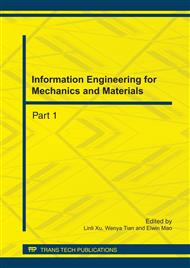p.302
p.307
p.313
p.317
p.322
p.327
p.332
p.339
p.346
Optimizing the Performance for Nonbonded Force Calculation of Chemical Simulation on CBEA
Abstract:
The molecular dynamics tool usually employs a neighbor list that contains the particle pairs for which non-bonded forces would be calculated. Though accessing to the array of atoms’ position and force does not exhibit a cache friendly pattern on a computer during the nonbonded force calculation, the neighbor list could be referred as a directive for the memory access. Designing specific data prefetching policy according to the neighbour list which was generated before the calculation can reduce the latency of memory access and improve the molecular dynamics simulation process. In this paper, an optimization memory access method referred by particle neighbor list based on CBEA was proposed. The experimental result shows that the proposed method reduces the latency of memory access and improves performance of the molecular-dynamics-based chemical simulation greatly.
Info:
Periodical:
Pages:
322-326
Citation:
Online since:
July 2011
Authors:
Price:
Сopyright:
© 2011 Trans Tech Publications Ltd. All Rights Reserved
Share:
Citation:


